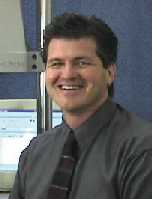Evolving Device Designs Require New Test Technologies
Medical Device & Diagnostic Industry MagazineMDDI Article IndexOriginally Published March 2000
March 1, 2000
Medical Device & Diagnostic Industry Magazine
MDDI Article Index
Originally Published March 2000
The rapidly changing nature of medical devices submitted for FDA approval will require more advanced testing technologies, says Kent Vilendrer, president of EnduraTEC Systems Corp. (Minnetonka, MN). Vilendrer suggests that there are four underlying reasons for this: increased specimen durability requirements, the desire for faster tests with better accuracy, the use of new materials, and a lack of good animal models (Medical Testing: Accelerated Protocol Development and Advanced System Design).
He explains that many new medical devices require a 10-year-equivalent or 400-million-cycle test. Says Vilendrer, "Keep in mind that traditional fatigue testers are only fatigue rated to 100 million cycles. This means that if you use one to run a 400-million-cycle test, you better be standing by with tools in hand when critical machine elements such as seals and bearings begin to wear." Commenting on the changes he has seen in the field, Vilendrer says, "When we set about building our first medical device test system a few years back we looked for technologies that would provide a dramatic increase in endurance over existing approaches. Electromagnetic actuators and laser measurement provided the answer."
|
Historically, the 400 million-cycle test was remarkably time-consuming, Vilendrer notes. "Even with a traditional acceleration rate of 15X it still required eight months!" Although increasing the test frequency further reduces test time, test accuracy must also be maintained. He explains that one approach that provides both outcomes is to control the desired test variable directly. "Traditional approaches to radial durability testing of stent-graft devices used an indirect method where a cyclic pressure was used to create an implied strain. However, by focusing on direct control of the desired variable (strain) we were able to increase the test frequency to 50X physiological and provide a more accurate test at the same time."
"We are on the edge of a materials revolution in medical devices," Vilendrer says. "Shape memory alloys, resorbable polymers, sheathed/coated structures, and tissue-engineered devices don't exhibit the same characteristics as traditional materials." He adds that, "New properties to be examined include temperature transition behaviors, dynamic response, interface wearing, bond breakdown, strengthening due to conditioning—and the list goes on." He says that, because these requirements imply more load cycles across a broad spectrum of frequencies, new testing technologies will need to be developed.
The unique geometries of many of today's medical devices can make it difficult to find a physiologically similar animal model. Vilendrer says that the animal may not subject the device to the same loading that might occur in a clinical setting. Due to size differences in human and animal vascular systems, differences in physiological responses or other factors, correlation with actual clinical use may not be high. "This dictates the need for benchtop simulators. For the tissue-engineered device folks, the benchtop simulator can also be used for conditioning the device. Faster and more responsive actuators, better controls and more accurate environmental simulation are all required for better benchtop simulation."
Says Vilendrer, "If I could put these thoughts in a headline it might read, 'Innovative Medical Devices Require Innovative Test Systems.' The state of the art of medical device design is a constantly changing landscape. Test engineers will continue to be challenged with new ways for testing. Yesterday's testing technologies are no longer useful. You wouldn't use a 1940s-vintage oscilloscope to test a modern personal computer. I believe we are seeing the same trend in the medical device industry and our goal is to anticipate these trends and create new test solutions before they are actually required."
Return to the MDDI February table of contents | Return to the MDDI home page
Copyright ©2000 Medical Device & Diagnostic Industry
About the Author(s)
You May Also Like


.png?width=300&auto=webp&quality=80&disable=upscale)
